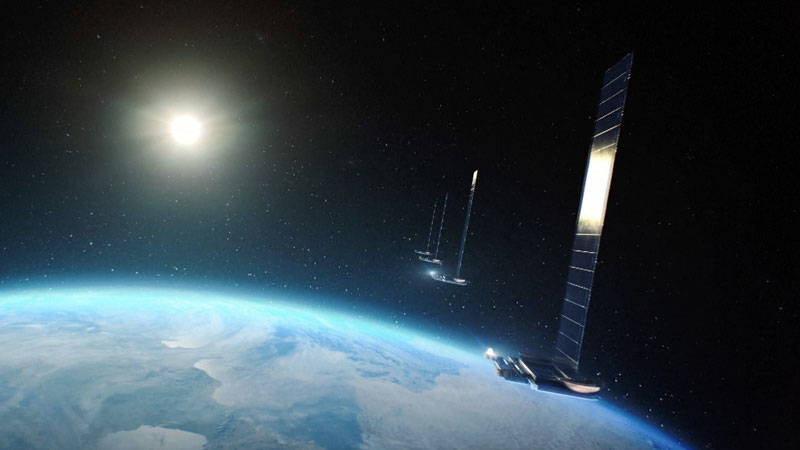The US Space Command (USSPACECOM) reported that the recent launch of the first batch of satellites for the future satellite Internet service by the Chinese Long March 6A rocket led to the appearance of an impressive cloud of space debris in orbit. The service detected over 300 fragments of the rocket’s upper stage. All 18 satellites have been launched into specified orbits. But if each such launch results in a cloud of garbage, this will not end well.

Chinese satellite Internet network Qianfan as imagined by an artist. Image source: CCTV
The launch of the first batch of devices for the Chinese global satellite Internet network Qianfan (“Thousand Sails”) took place on August 6, 2024. This year, 108 communications satellites are due to be launched, and by the end of 2025, another 648 will be launched. It is planned that by 2028 the network will cover the entire planet, and by the end of the decade the number of satellites should grow to 15,000. If all launches multiply space debris in orbit, then by the end of the decade, space flights could become an extremely risky endeavor.
«USSPACECOM can confirm the disintegration of the Long March 6A rocket launched on August 6, 2024, resulting in more than 300 pieces of traceable debris in low Earth orbit, the organization said in an August 8 statement. “USSPACECOM has not identified any immediate threats and continues to conduct routine interoperability assessments to support the security and sustainability of the space domain.”
It should also be taken into account that modern tracking tools in orbit can only detect fragments larger than 10 cm. There are at least 40,500 of these today. There may be over 130 million smaller fragments, but they pose no less a danger to spacecraft than large pieces of debris. There is a clear lack of international regulation in this area.